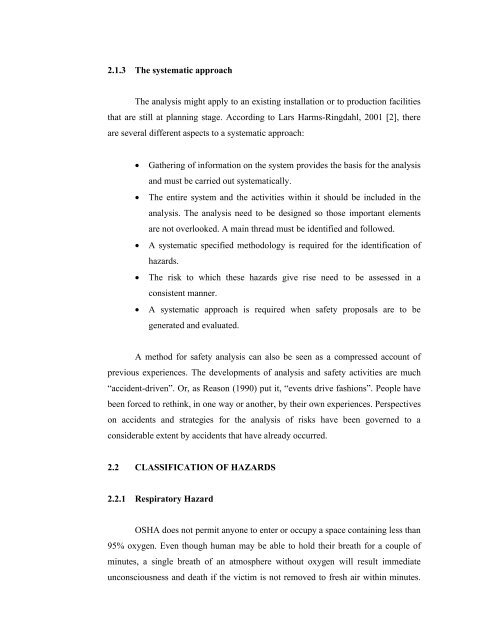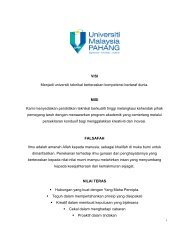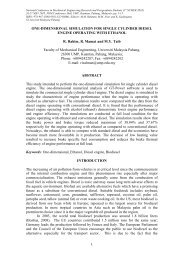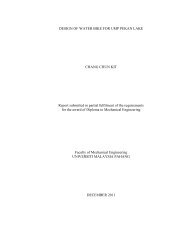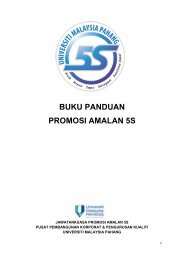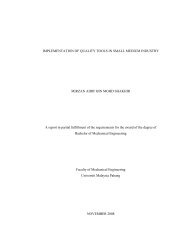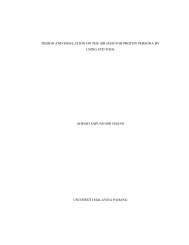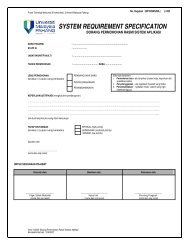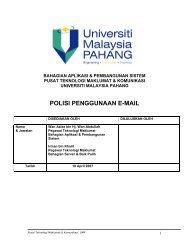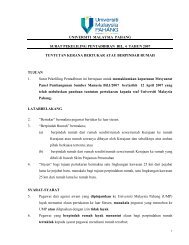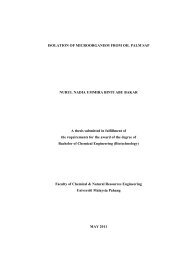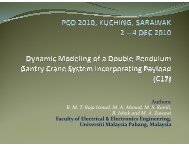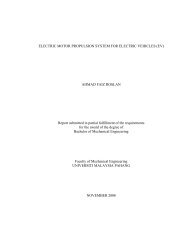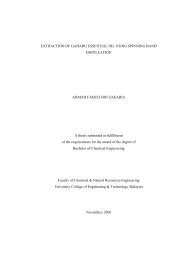assessing safety analysis at fkm's laboratory - Universiti Malaysia ...
assessing safety analysis at fkm's laboratory - Universiti Malaysia ...
assessing safety analysis at fkm's laboratory - Universiti Malaysia ...
Create successful ePaper yourself
Turn your PDF publications into a flip-book with our unique Google optimized e-Paper software.
2.1.3 The system<strong>at</strong>ic approachThe <strong>analysis</strong> might apply to an existing install<strong>at</strong>ion or to production facilitiesth<strong>at</strong> are still <strong>at</strong> planning stage. According to Lars Harms-Ringdahl, 2001 [2], thereare several different aspects to a system<strong>at</strong>ic approach:G<strong>at</strong>hering of inform<strong>at</strong>ion on the system provides the basis for the <strong>analysis</strong>and must be carried out system<strong>at</strong>ically.The entire system and the activities within it should be included in the<strong>analysis</strong>. The <strong>analysis</strong> need to be designed so those important elementsare not overlooked. A main thread must be identified and followed.A system<strong>at</strong>ic specified methodology is required for the identific<strong>at</strong>ion ofhazards.The risk to which these hazards give rise need to be assessed in aconsistent manner.A system<strong>at</strong>ic approach is required when <strong>safety</strong> proposals are to begener<strong>at</strong>ed and evalu<strong>at</strong>ed.A method for <strong>safety</strong> <strong>analysis</strong> can also be seen as a compressed account ofprevious experiences. The developments of <strong>analysis</strong> and <strong>safety</strong> activities are much“accident-driven”. Or, as Reason (1990) put it, “events drive fashions”. People havebeen forced to rethink, in one way or another, by their own experiences. Perspectiveson accidents and str<strong>at</strong>egies for the <strong>analysis</strong> of risks have been governed to aconsiderable extent by accidents th<strong>at</strong> have already occurred.2.2 CLASSIFICATION OF HAZARDS2.2.1 Respir<strong>at</strong>ory HazardOSHA does not permit anyone to enter or occupy a space containing less than95% oxygen. Even though human may be able to hold their bre<strong>at</strong>h for a couple ofminutes, a single bre<strong>at</strong>h of an <strong>at</strong>mosphere without oxygen will result immedi<strong>at</strong>eunconsciousness and de<strong>at</strong>h if the victim is not removed to fresh air within minutes.


